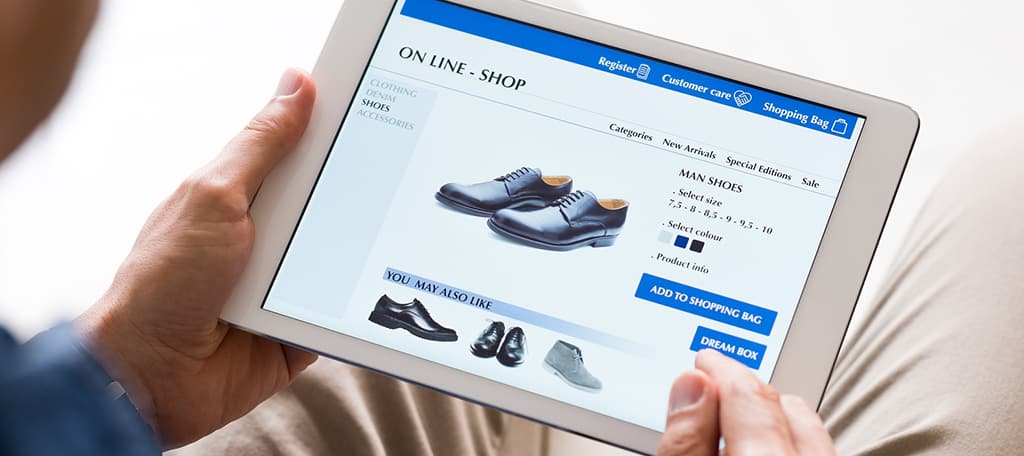
In today’s Internet-driven world, online sales are just as vital to a company as real-life sales. In many instances, businesses will actually make more money selling goods from a website than they will from walk-in customers.
When you consider that almost one-third of people in the United States shop online every week, that’s a lot of money your digital store may be missing.
So, what can be done to increase online sales? Can a small business make waves in the digital ocean of commerce? I’ve seen the smallest single-person idea from a garage grow to a multi-chain network across the United States all from online sales.
Yes, I can see someone succeeding in cyberspace when it comes to sales. Once you invest in great web hosting, it all becomes a matter of effort to drive success.
Here are 13 of the most brilliant strategies I’ve found that have been known to increase sales online. The best part is that many of them don’t require a hefty investment.
1. Be Approachable

A 2015 study showed that approximately 44% of visitors will leave a company website if there is no contact information available. That’s almost half of your prospective sales leaving before making a purchase. Can you imagine what you can accomplish if you could somehow double your monthly income?
In a world that is blanketed in fake sites, consumers need to be assured more now than ever before that a company is legitimate.
It’s all part of building a trusting relationship. The more available you make your company to the general populace, the more comfortable they feel making a purchase.
A few ways you can be more approachable include:
- Having business addresses and phone numbers readily available.
- Making the company information easy to find.
- Registering the business with sites like Google, which also helps in SEO.
- Include an obvious and easy-to-use contact form on the site.
- Incorporate live chat services.
When an online business hides certain information from public view, fewer people are likely to buy goods and services.
2. Make Checkout Easier

Approximately 28% of online consumers abandoned their carts because the checkout process was too complicated. These complications range from requiring too much information about the shopper or heavy security measures that simply take too long to complete.
People want a quick-and-easy shopping experience. Any design and strategy that can shave off seconds from the shopping experience can help boost website sales.
And this is especially important from a mobile perspective. Creating a mobile-friendly environment is vital, and a streamlined checkout process is part of delivering a high-quality experience.
In fact, more than a third of shoppers will abandon a cart simply because the site wants them to register. There is something to be said about providing anonymity.
Since a large portion of people shopping online do so from a smartphone, keeping it simple caters to the mobile generation.
3. Show Customer Product Reviews

Nearly 90% of consumers will trust online reviews from others as much as they trust people they know. It provides an element of engagement, especially if your site lets anyone post a review of a product they had purchased.
In reality, millions of people flock to sites like Amazon to read reviews of any product whether their purchase is digital or in real life.
I know I take a look at what others think before making purchases on things like electronics. How often do you look up information on your own mobile device?
Offering reviews can also play a part in search engine optimization. If you use a review snippet that is optimized, your site may show those items to a larger audience in results pages of sites like Google. This in turn has potential to increase web sales by driving interest.
4. Display Security Badges and Brands

Displaying the icons of trusted security brands is a great way to deliver a sense of trust to the consumer. One of the biggest fears of any shopper is having his or her information leaked or stolen.
In an age where identity theft runs rampant, this is a major concern. Using essential security features is great, but showing it proudly is inspiring.
While various security methods do require a monthly expense, the trade off in sales may be worth the investment. Consumers often trust a website more if the developer shows the importance of site security.
Simply seeing a graphic of the company protecting the website is enough to make many feel at ease when handing over their personal information.
Remember, it’s all about establishing trust between yourself and your customers. People need to know that your company holds their information as important as the most top secret of documents.
5. Coupons and Discounts

A tried-and-true way of increasing sales for any business has been through the use of coupons. Although you’ll make less money on the sale, these work to encourage customers to come back at a later date.
Return visits are how many companies stay open when others close down within four years of operation.
One of the best things about coupons and discounts is how easy they are to distribute to the masses. Some methods include:
- Including promo codes in pay-per-click campaigns.
- Inserting coupons within packaging materials after someone makes a purchase.
- Sharing promo codes on social media such as Facebook and Twitter.
- Advertising discounts directly on the website.
You want to keep visitors coming back for more. Providing discounts on various goods entices a large portion of shoppers to do just that. While it’s true that you may come across a few shoppers that are only there for the deals, many of them will become fans of the brand.
6. Incorporate Social Media Strategies

Three out of four online marketers state how social media engagement is worth the investment. A large portion of this has to do with the incredible number of people who use social media on a daily basis.
Sites like Facebook and Twitter give the average person a direct link to virtually any business. Because of this, consumers often feel more attached to a brand and are more likely to trust a business.
This is especially true if the business interacts with fans and followers through those social sites.
When posting on social media, stay away from sounding too “salesy.” People want to be engaged, not advertised upon. Make the post feel more like it’s coming from a friend who wants to share something cool.
Also, incorporate images or video. Visual content is shared far more often on social media than simple text.
7. Responsive Design

Developing a responsive design is vastly important to increase online sales. Nearly 60% of smartphone users will use their devices to research products. This means that using responsive layouts will have an impact on how people interact with your site on a consumer basis.
But research isn’t the only thing that you need to address. In fact, it is believed by the end of 2018 that mobile commerce will attribute to over $90 billion in sales within the United States alone.
Any organization that doesn’t develop true and easy-to-use responsive design limits the chances of bringing home some of that proverbial pie.
8. Making Consumers Feel the Purchase is Urgent

Another tactic that transcends time is that of making the consumer feel the purchase is urgent. You may have seen this in the past during infomercials with countdown timers and the like. It’s the same principal, only that it’s presented online rather than the real world.
Stating that an offer ends at a certain date or during a specific time makes people feel like they have to “act now.” It’s kind of like taking a call to action to the extreme.
Because many people are impulse shoppers, urgency makes them feel like they’ll miss out on something if they don’t make a purchase.
Incentives like free shipping, price cuts and buy-one-get-one free have been a staple of retail stores for years. Adding a time limit only fuels a consumer to make the purchase before it’s too late.
9. Using the Power of YouTube

YouTube is more than just a social platform to make cat videos. It can be a method to demonstrate how products work and why consumers would want them. About 60% of YouTube subscribers would buy a product based on the advice of their favorite creators.
Here are a few other reasons to consider YouTube videos to increase web sales:
- They are easily shared on other social sites including Facebook and Twitter.
- Product videos can be embedded into product descriptions of your sales site.
- The business can generate ad revenue from the YouTube account as well as engage consumers.
- You can reach viewers who may not realize the business exists.
The truth of the matter is that four times as many consumers would rather watch a video about a product rather than read a blog post about it. By expanding your reach into platforms like YouTube, the business can increase its reach.
And this goes beyond investing with influencers to advertise your brand. Create your own content and cover all your bases for engaging a bigger audience.
10. Accept Multiple Payment Types

Not everyone uses the same methods for online payments. Although cash-on-delivery and checks have long since become obsolete, other forms of currency are available to the digital community.
For example, not everyone uses and trusts PayPal.
Multiple payment types are only the tip of an extremely large iceberg. If you offer global commerce, incorporating something like Alipay connects your site to Chinese visitors.
In fact, there are a large number of payment methods available around the world that may appeal to those local consumers.
The biggest issue you may have to face while using many payment methods is the accrual of fees. If you want to incorporate multiple payment methods, try to use those that don’t require monthly fees and extra costs.
For instance, both PayPal and Square offer per-transaction fees without a reoccurring monthly expense.
11. Consider Affiliate Marketing

Gathering affiliates to help you sell can easily stretch your reach of engaging consumers. Instead of using the might of your own marketing budget, you essentially hire others to do the legwork for you.
Here is how it works. Someone signs up with your business to be an affiliate. You give them special links and banners that tracks when someone they refer to your company makes a purchase. You then give the affiliate a certain percentage of the sale.
Using affiliates has potential to work exceptionally well. As long as you have comprehensive guidelines to avoid spamming or other grey areas, these affiliates can get your product in front of more people in a short amount of time.
Essentially, you’re using them to market your brand without spending a dime in upfront costs. Additionally, the percentages you provide are really not much higher than any discounts you give to consumers through coupons.
12. Cross-sell Your Products

Cross-selling is a process where you show a shopper items that he or she may also be interested in. Some eCommerce platforms have integrated algorithms that can determine an individual’s interests based on what products he or she views or adds to the cart.
Let me explain a bit.
Say that you sell golf equipment and someone adds a new golf bag to the shopping cart. The cross-sell would be to show things like golf balls and other bag accessories that the consumer may also be interested in.
This process is viewed in many online stores for the simple reason that it works. It’s like giving someone a reminder that the consumer can also pick up other items related to the purchase.
13. Email Marketing Campaigns

Email is still one of the most cost effective and productive forms of marketing for online sales. In fact, it’s 40 times more effective at engaging customers than social media.
Many companies offer newsletters and subscriptions based on the niche of the industry. Many of these come in blog-type format without adding in too much of a salesy tone.
Personalizing these messages also makes a difference when it comes to engaging the audience.
It’s all in how the email or newsletter is developed. By making it attractive for both desktop and mobile users, you can increase online sales. This is because one out of every three clicks in an email originates from mobile devices.
Whether these are messages you create yourself or have an automated and triggered response, these engagements are worth the investment. Using some of the best email marketing platforms on the Internet will help you streamline the process.
Many will attest how changes in a message will directly affect an email response rate from recipients. Delivering a sense of engagement is the best approach to email marketing.
Get More Out of Marketing
Developing strong online sales strategies often relies on trial and error. While something may work great for one person, it may not be as prolific to another.
It may take a bit of time and effort to find the practices that work best for you. The point is that not doing anything at all is far worse than trying something new.
